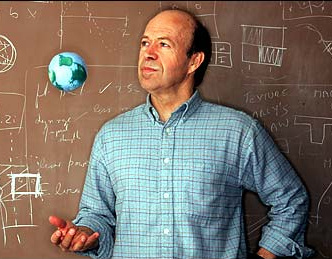
Exactly 20 years have passed since Dr. James E. Hansen of NASA first testified to Congress on June 23, 1988 that global temperatures had risen beyond the range of natural variability. Waiting another 20 years before taking decisive action is not an option.
Since 1988, mainstream scientific thinking has caught up with Dr. Hansen’s declaration that our climate is being adversely affected by human activities, primarily the burning of fossil fuels—and the forecasts of climate change in the coming decades are increasingly dire.
But political action has fallen well behind the pace of scientific progress, and despite growing public support to limit greenhouse gas emissions, the U.S. Senate failed early this month to approve landmark legislation that would have begun to do so.
Dr. Hansen’s latest research indicates that greenhouse gas concentrations have already reached damaging levels and the climate is nearing a dangerous tipping point that will unleash far-reaching changes in the atmosphere and oceans that could take millennia to reverse. In his latest paper, Dr. Hansen calls for deep reductions in carbon dioxide emissions, beginning almost immediately, with a focus on phasing out the uncontrolled combustion of coal by 2030.
As the world moves toward a new climate agreement in 2009, decision makers must understand the tremendous risks we face and the urgency of action in the year ahead.
Although an ever shrinking number still argue that such a transition to a low-carbon energy system will be enormously expensive and difficult, research has shown that it would open up vast economic opportunities, spur innovation and job creation, assist efforts to reduce poverty, and increase energy security.
The transition to a low-carbon economy should be based on sustainable use of renewable sources of energy, including wind, solar, geothermal, and biomass, together with major advances in energy efficiency. The world can achieve a tipping point at which renewables are less expensive than fossil energy—allowing economic momentum to accelerate the transition.
The United States and other industrial nations must work collaboratively with developing countries to increase their capacity to respond to the challenges presented by climate change and to pursue a more viable energy development path. Brazil, China, Europe, India, and the United States together account for 60 percent of global greenhouse gas emissions.
Following Dr. Hansen’s recommendations, policymakers should adopt a policy that puts a price on carbon dioxide emissions, halts the construction of uncontrolled coal-fired power plants, and promotes agriculture and forestry practices that will sequester large amounts of carbon.
Achieving the needed energy transformation will require profound changes in government policies, strengthened global governance in the form of a new international climate agreement, and the mobilization of the private sector to develop and deploy a host of new technologies.
“We applaud Jim Hansen for his leadership on this critical issue,†said Worldwatch President Christopher Flavin. “His warnings show how essential it is that 2008 become a turning point for climate policy as well as climate science—launching the post-fossil fuel economy the world so desperately needs.â€
(For more info see J. Hansen et al., “Target Atmospheric CO2: Where Should Humanity Aim?†revised 18 June 2008. http://arxiv.org/abs/0804.1126 and http://arxiv.org/abs/0804.1135)
If it is all right to do so here, I would like to nominate James Hansen to be the Science Laureate of Humanity in 2008.